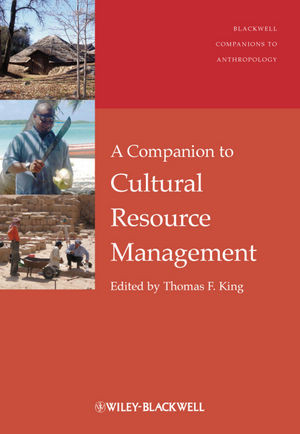A Companion To Cultural Resource Management Thomas F King Ed by Thomas F. King (ed.) 9781405198738, 9781444396065, 1405198737, 1444396064 instant download after payment.
A Companion to Cultural Resource Management is an essential guide to those wishing to gain a deeper understanding of CRM and heritage management. Expert contributors share their knowledge and illustrate CRM's practice and scope, as well as the core issues and realities in preserving cultural heritages worldwide.
- Edited by one of the world's leading experts in the field of cultural resource management, with contributions by a wide range of experts, including archaeologists, architectural historians, museum curators, historians, and representatives of affected groups
- Offers a broad view of cultural resource management that includes archaeological sites, cultural landscapes, historic structures, shipwrecks, scientific and technological sites and objects, as well as intangible resources such as language, religion, and cultural values
- Highlights the realities that face CRM practitioners "on the ground"
Content:
Chapter 1 Studying and Evaluating the Built Environment (pages 13–28): Kathryn M. Kuranda
Chapter 2 Principles of Architectural Preservation (pages 29–53): David L. Ames and Leila Hamroun
Chapter 3 Archaeology of the Distant Past (pages 54–77): Michael J. Moratto
Chapter 4 Archaeology of the Recent Past (pages 78–94): Thomas F. King
Chapter 5 Geographies of Cultural Resource Management: Space, Place and Landscape (pages 95–113): William M. Hunter
Chapter 6 Culturally Significant Natural Resources: Where Nature and Culture Meet (pages 114–127): Anna J. Willow
Chapter 7 History as a Cultural Resource (pages 128–140): Deborah Morse?Kahn
Chapter 8 Portable Cultural Property: “This belongs in a Museum?” (pages 141–155): Wendy Giddens Teeter
Chapter 9 “Intangible” Cultural Resources: Values are in the Mind (pages 156–171): Sheri Murray Ellis
Chapter 10 Religious Belief and Practice (pages 172–202): Michael D. McNally
Chapter 11 Language as an Integrated Cultural Resource (pages 203–220): Bernard C. Perley
Chapter 12 Challenges of Maritime Archaeology: In too Deep (pages 223–244): Sean Kingsley
Chapter 13 Historic Watercraft: Keeping them Afloat (pages 245–262): Susan B. M. Langley
Chapter 14 Historic Aircraft and Spacecraft: Enfants Terribles (pages 263–271): Ric Gillespie
Chapter 15 Studying and Managing Aerospace Crash Sites (pages 272–280): Craig Fuller and Gary Quigg
Chapter 16 Evaluating and Managing Technical and Scientific Properties: Rockets, Tang™, and Telescopes (pages 281–297): Paige M. Peyton
Chapter 17 Historic Battlefi elds: Studying and Managing Fields of Conflict (pages 298–318): Nancy Farrell
Chapter 18 Managing Our Military Heritage (pages 319–336): D. Colt Denfeld
Chapter 19 Linear Resources and Linear Projects: All in Line (pages 337–350): Charles W. Wheeler
Chapter 20 Rock Art as Cultural Resource (pages 351–370): Linea Sundstrom and Kelley Hays?Gilpin
Chapter 21 Consultation in Cultural Resource Management: An Indigenous Perspective (pages 373–384): Reba Fuller
Chapter 22 A Displaced People's Perspective on Cultural Resource Management: Where We're From (pages 385–401): David Nickell
Chapter 23 Cultural Resource Laws: The Legal Melange (pages 405–419): Thomas F. King
Chapter 24 International Variety in Cultural Resource Management (pages 420–438): Thomas J. Green
Chapter 25 Consultation and Negotiation in Cultural Resource Management (pages 439–453): Claudia Nissley
Chapter 26 Being a US Government Cultural Resource Manager (pages 454–471): Russell L. Kaldenberg
Chapter 27 Making a Living in Private Sector Cultural Resource Management (pages 472–487): Tom Lennon
Chapter 28 The Historic Built Environment: Preservation and Planning (pages 488–514): Diana Painter
Chapter 29 CRM and the Military: Cultural Resource Management (pages 515–533): Michael K. Trimble and Susan Malin?Boyce
Chapter 30 A Future for Cultural Resource Management? (pages 534–549): Thomas F. King


